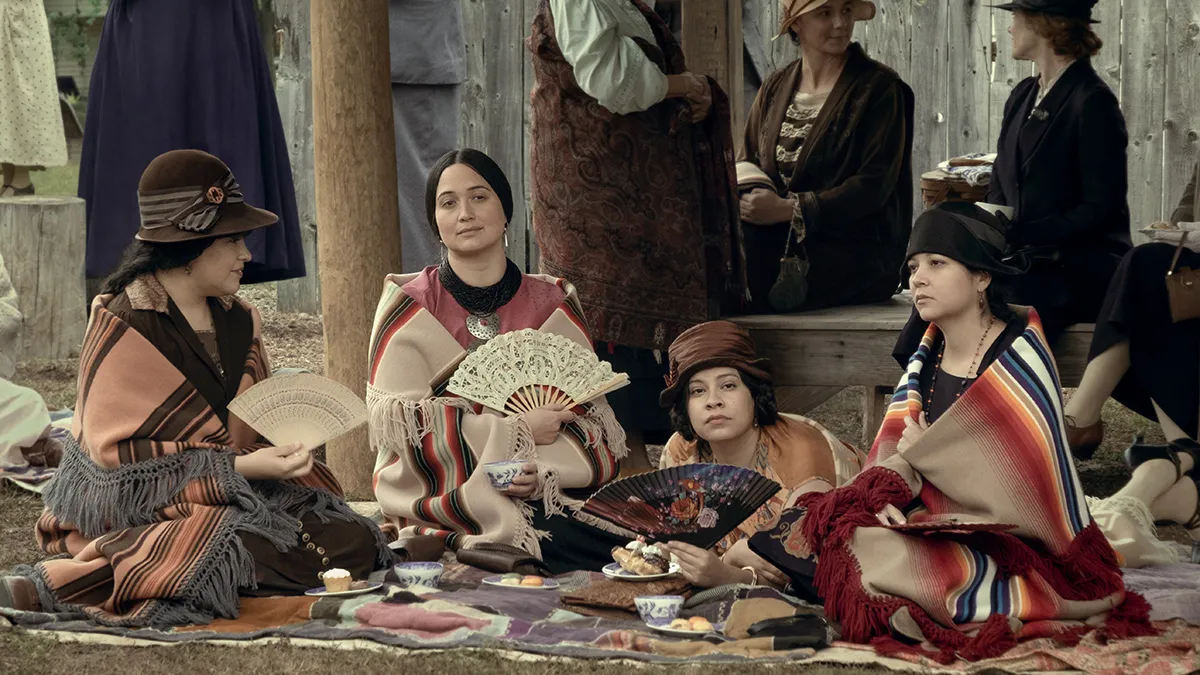Martin Scorsese’s Killers of the Flower Moon brings to light the countless Osage people who were murdered in the early 1900s, by white Oklahomans trying to take away their rights to the oil on their land and the wealth it generated. Mollie Burkhart and her family are the most important part of that story.
The film depicts Ernest Burkhart (Leonardo DiCaprio) and his greed, pushed forward by the will of William King Hale (Robert De Niro) and his desire to destroy Mollie’s family by trying to slowly take their money away, killing them one by one. Mollie is played beautifully by Lily Gladstone, and it’s her pain and loss that make the the film work. We’re watching the desires of these white men tear her family apart, and leaving their perspective out of the story would undercut the film’s efforts to draw necessary attention to this awful part of history.
Starting with the loss of her sister Minnie (Jillian Dion), Mollie watches as her sisters and her mother slowly begin to fade away from her one by one, all at the hands of the men around them. They are, in a lot of ways, the only bit of heart that Killers of the Flower Moon has. Without them, the movie is just the senseless and painful killings of the Osage people for the greed of the white men.
Mollie Burkhart is, seemingly, a woman who proudly lives on her own before she meets Ernest Burkhart. Ernest is easily manipulated, someone who doesn’t have two brain cells of his own. Even Mollie knows this; she says that he’s stupid but that he’s handsome, and acknowledges that he wants her money. The beginning of their relationship does seem simple enough, but as the movie goes on, it is her family that feels King’s wrath most of all.
Mollie’s sisters are victims of King’s greed in the same way as many Indigenous women. Seen as collateral damage, Mollie’s family is picked off one by one to line the pockets of those who won’t work for their own money—a central theme throughout Killers of the Flower Moon is the idea that only white men can come from money and do “nothing” to earn it.
The Osage, who found oil on the land that is rightfully theirs, thrive in keeping their land healthy and alive and constantly work to do so, but the white men of Fairfax don’t see that. King and his ilk see Mollie as a means to an end and her sisters as a way to get there, beginning a journey for Mollie that is filled with the death and destruction of the ones she holds dearest in her life, at a time when she is meant to be the happiest.
Each of them—Minnie, Anna, Reta, and their mother Lizzie Q—has a life and their own dreams, and all of it is taken from them because of these men. Even in the midst of this devastation, we can still see the love Mollie has for her family. Which is why emphasizing the story of Mollie and her family in Killers of the Moon is important.
(featured image: Paramount Pictures / Apple Original Films)










Published: Oct 25, 2023 05:51 pm